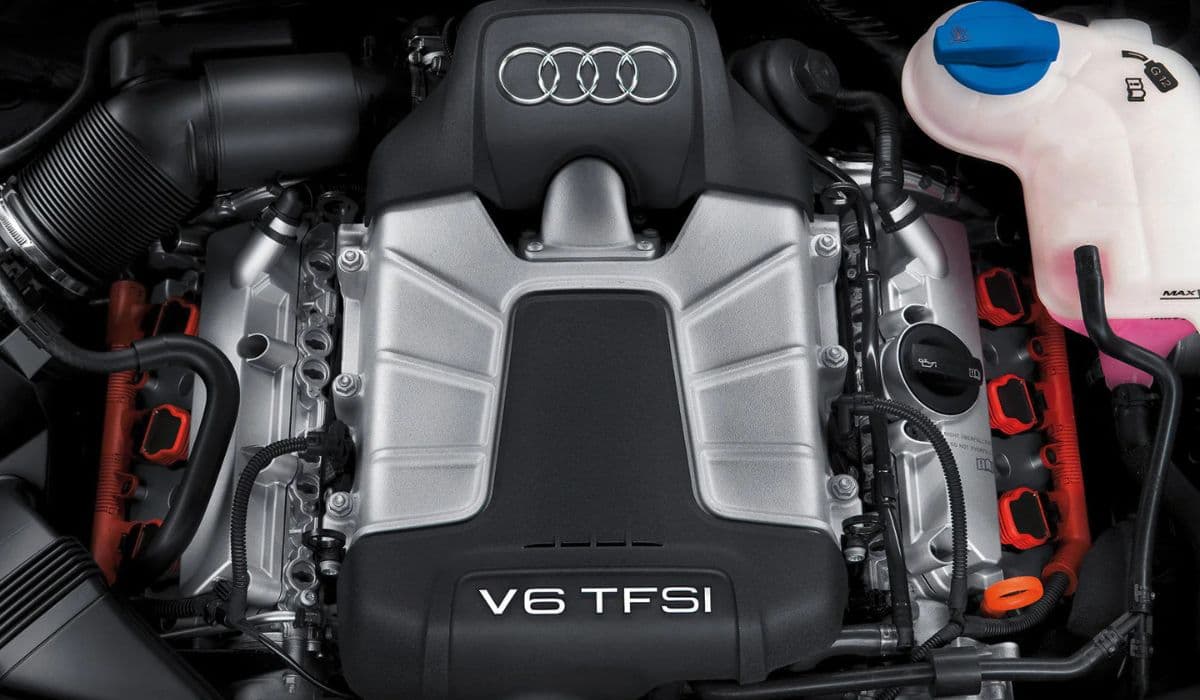Audi Engine: The Complete Evolution of EA Powertrains

Audi has built its reputation on turbocharged efficiency, quattro all-wheel drive, and a relentless push toward forced induction. From the groundbreaking five-cylinder turbo of the original Quattro to the ultra-refined modular EA888 and EA839 families of today, Audi’s internal combustion engines (ICE) represent one of the most consistent and innovative lineages in the industry. This guide covers every major gasoline, diesel, and high-performance Audi engine family still relevant in the modern era.
Early Inline-Five Legacy: The Iconic Turbocharged Heart
The story begins in 1976 with the naturally aspirated EA827 inline-five (Type 85) in the Audi 100. Displacements ranged from 2.1 to 2.2 liters and produced up to 136 hp.
Everything changed in 1980 when the turbocharged 2.1-liter five-cylinder (code WR, MB, and later MC) debuted in the legendary Ur-Quattro. Producing 200 hp in road form and over 500 hp in Group B rally spec, it pioneered turbocharging for production cars and gave Audi its performance DNA.
The second-generation 2.2-liter 20V turbo (AAN, ABY, ADU) from 1991–1997 raised the bar to 220–315 hp (S2, RS2 Avant) with four valves per cylinder, larger KKK turbos, and forged internals. Even today, the AAN in the S4/S6 C4 is considered one of the most tunable engines ever made.
EA888: The Ubiquitous Turbo Four-Cylinder King
Since 2008, the EA888 family (1.8 TFSI & 2.0 TFSI) has powered almost every transverse Audi from A3 to Q5. Now in its Gen4 iteration (2023+), it remains the backbone of the VW Group.
- Gen1 (2008–2012): Chain-driven camshaft, early oil consumption issues on some 2.0 TFSI (CAWA, CAWB, CCTA).
- Gen2 (2011–2015): Revised pistons, better oil rings, AVS variable valve lift on some versions.
- Gen3 (2013–2020): Belt-driven auxiliary, Miller-cycle capable, outputs from 170 hp (Golf) to 310 hp (S3 8V).
- Gen3B (2016+): Higher compression, particulate filter, up to 320 hp in TTS and Cupra variants.
- Gen4 (DL382/DL383): 48V mild-hybrid standard, cylinder-on-demand, 265–320 hp in current A4/A5/Q5 45 TFSI and S models.
The EA888 is renowned for its tuning potential — 400+ hp on stock internals is routine with just a Stage 2 ECU and turbo upgrade.
EA839: The Modern 2.9 & 3.0 TFSI V6
Introduced in 2016, the EA839 V6 replaced both naturally aspirated 3.2 VR6 and 3.0 supercharged engines.
- 3.0 TFSI (EA839): Single twin-scroll turbo in the “hot-V” layout (turbo between cylinder banks). Outputs 340–354 hp in A6/A7/Q7/Q8 55 TFSI models. Extremely smooth and responsive.
- 2.9 TFSI: Biturbo version exclusive to RS4/RS5 (B9) and RS5 Sportback, producing 450 hp and 600 Nm. Forged crank, reinforced block, and water-to-air intercooling integrated into the intake manifold.
The 2.9 TFSI is widely regarded as one of the best-sounding and most tunable modern performance engines (600+ hp common with Stage 2).
## High-Performance RS Engines: S and RS-Specific Masterpieces
- 2.5 TFSI (DAZA/DNWA): The award-winning inline-five lives on in RS3 8V (400 hp) and 8Y (407 hp). 10-time International Engine of the Year winner (2010–2019). Aluminum block, plasma-coated bores, and a massive turbo deliver explosive mid-range.
- 4.0 TFSI V8 (EA825): Shared with Porsche and Lamborghini. Base version in S6/S7/S8 (450–571 hp), full RS version in RS6/RS7 Performance and RS Q8 (600–630 hp). Hot-V twin-turbo layout, cylinder-on-demand, and optional ceramic brakes in top models.
- 5.2 V10 FSI: Naturally aspirated legend from Lamborghini Gallardo. Used in R8 V10 (2008–2023) from 525 hp (first gen) to 620 hp (R8 V10 Performance RWD). One of the last high-revving naturally aspirated engines in production.
TDI Diesel Excellence: From Pumpe-Düse to Mild-Hybrid Common-Rail
Audi diesel engines have long set efficiency benchmarks.
- EA189 / EA288 1.6 & 2.0 TDI: The workhorses of A3/A4/Q5 generations. Post-2015 “clean diesel” versions with SCR AdBlue.
- EA897 family (3.0 TDI): Single or twin-turbo V6. Clean Diesel (2014+) 218–272 hp, then second-gen (2017+) with mild-hybrid 48V and electric compressor (SQ5/SQ7 early versions).
- 4.0 TDI V8: Biturbo or tri-turbo (SQ7 pre-2020 with electric compressor). Up to 435 hp and 900 Nm — the ultimate long-distance weapon.
- 2.0 TDI Mild-Hybrid (2019+): Most current 30–40 TDI models use 12V or 48V belt starter-generator for coasting and up to 12 kW boost.
Smaller Engines: 1.0 TFSI, 1.4 TFSI, 1.5 TFSI
- 1.0 TFSI three-cylinder: A1 and A3 base models — 110–116 hp, incredibly refined.
- 1.4 TFSI (EA211): Used until 2018, then replaced by 1.5 TFSI Evo with Miller cycle and cylinder deactivation (ACT). 130–150 hp with outstanding real-world economy.
- Plug-in hybrids (TFSI e): Combine 1.4 or 2.0 TFSI with electric motor for 204–367 hp system power (A3, Q3, Q5, A6, A7, Q8 TFSI e).
Current Modular Engine Strategy (PPD/MEB-based ICE)
All new longitudinal engines (2020+) belong to the Premium Platform Combustion (PPC):
- EA839 V6 and EA825 V8 continue with updates for EU7 emissions.
- EA888 Gen4 now standard across all transverse models.
- All new engines are 48V mild-hybrid capable and designed for synthetic e-fuels and future biofuel compatibility.
Audi’s engine lineup today strikes a masterful balance: the 2.5 TFSI five-cylinder delivers unmatched character, the EA888 and EA839 families offer bulletproof performance and tuning potential, while the latest mild-hybrid diesels remain unrivaled for long-distance efficiency. Even as electrification accelerates with the PPE and MEB platforms, Audi’s turbocharged ICE heritage continues to evolve — proving that driving emotion and responsibility can coexist.
